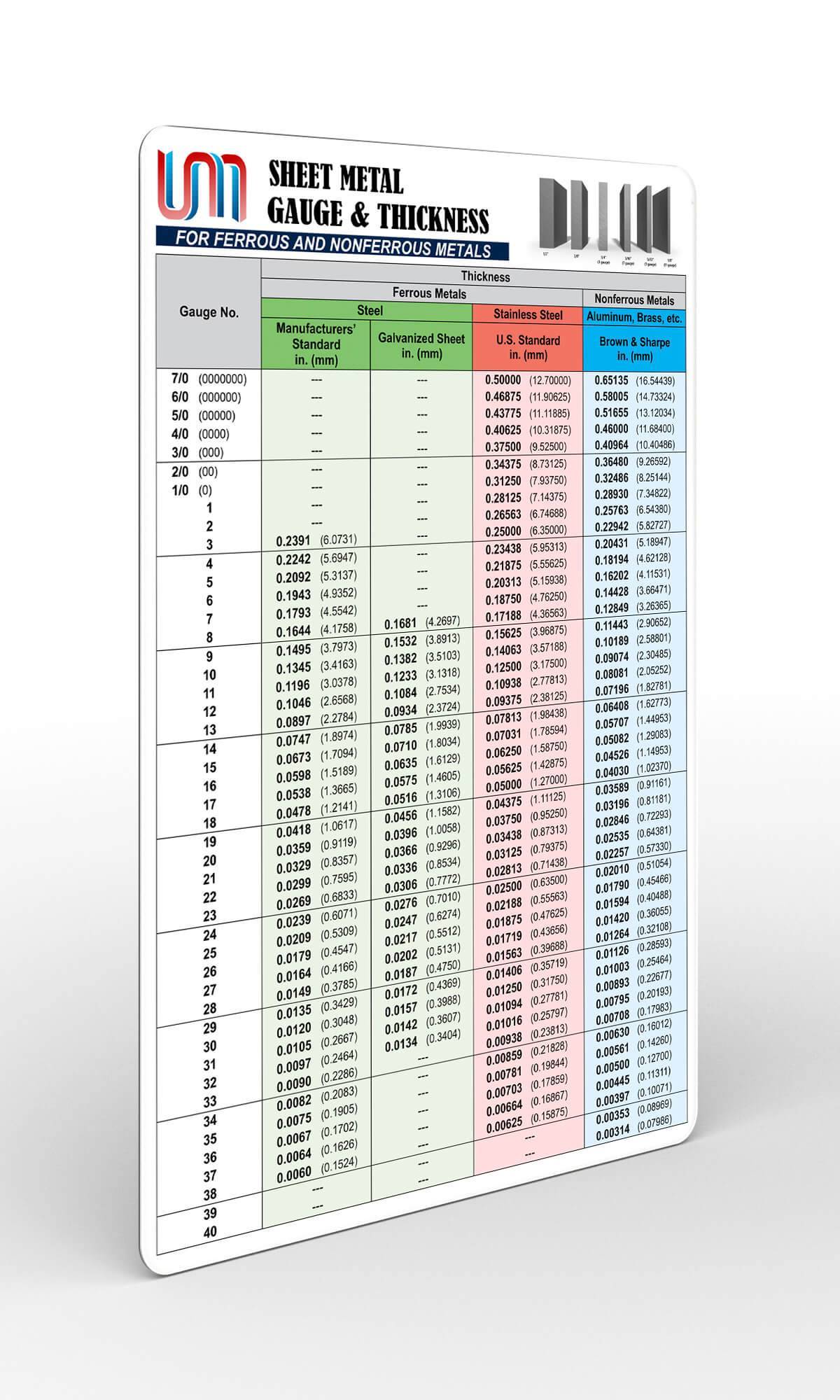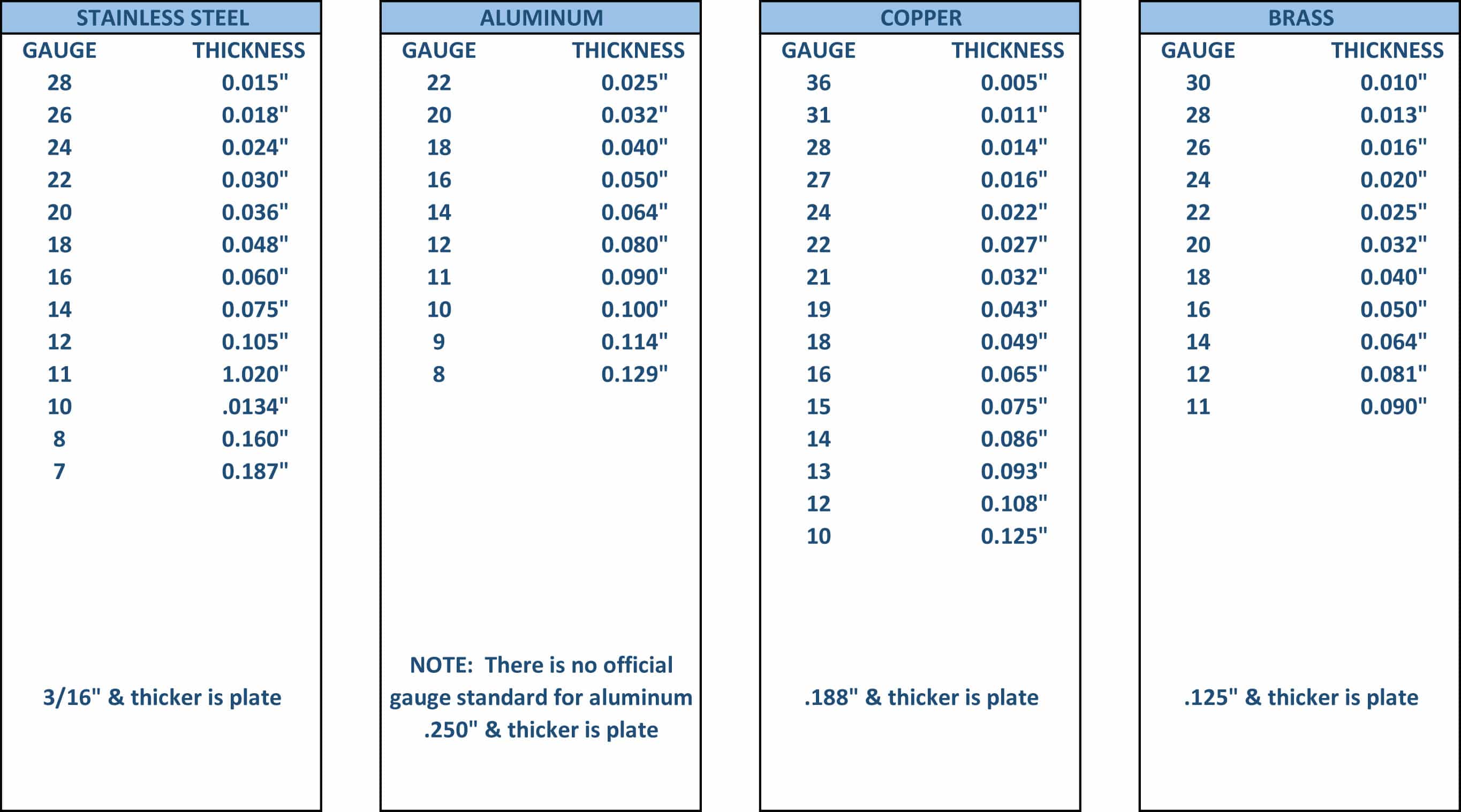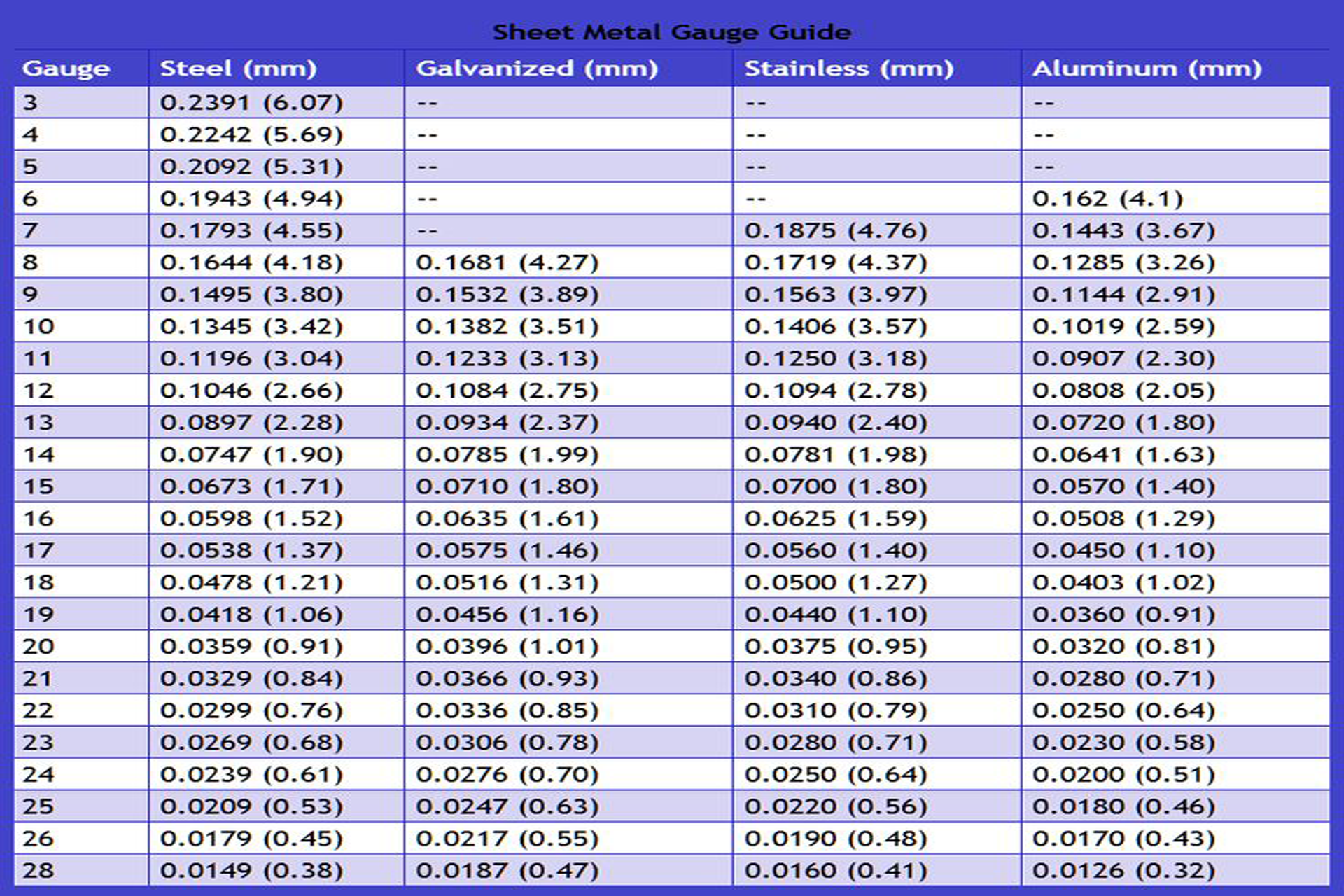Common Sheet Metal Thickness - Or you can download the sheet metal gauge size. Typical thickness ranges are 0.5 to 6 mm for steel, 0.2 to 5 mm for aluminum, 0.4 to 6 mm for stainless steel, and 0.2 to 3 mm for. 38 rows the chart below can be used to determine the equivalent sheet thickness, in inches or millimeters, for a gauge number from. 37 rows you can find the gauge to mm / inch conversion for sheet metal by the chart below.
Typical thickness ranges are 0.5 to 6 mm for steel, 0.2 to 5 mm for aluminum, 0.4 to 6 mm for stainless steel, and 0.2 to 3 mm for. Or you can download the sheet metal gauge size. 38 rows the chart below can be used to determine the equivalent sheet thickness, in inches or millimeters, for a gauge number from. 37 rows you can find the gauge to mm / inch conversion for sheet metal by the chart below.
37 rows you can find the gauge to mm / inch conversion for sheet metal by the chart below. 38 rows the chart below can be used to determine the equivalent sheet thickness, in inches or millimeters, for a gauge number from. Or you can download the sheet metal gauge size. Typical thickness ranges are 0.5 to 6 mm for steel, 0.2 to 5 mm for aluminum, 0.4 to 6 mm for stainless steel, and 0.2 to 3 mm for.
Resources Virginia MetalFab
Typical thickness ranges are 0.5 to 6 mm for steel, 0.2 to 5 mm for aluminum, 0.4 to 6 mm for stainless steel, and 0.2 to 3 mm for. 38 rows the chart below can be used to determine the equivalent sheet thickness, in inches or millimeters, for a gauge number from. 37 rows you can find the gauge to.
Gauge To Thickness Conversion For Common Sheet Metals, 58 OFF
37 rows you can find the gauge to mm / inch conversion for sheet metal by the chart below. Typical thickness ranges are 0.5 to 6 mm for steel, 0.2 to 5 mm for aluminum, 0.4 to 6 mm for stainless steel, and 0.2 to 3 mm for. 38 rows the chart below can be used to determine the equivalent.
Metric Sheet Metal Thickness A Comprehensive Guide & Chart Hungthai
37 rows you can find the gauge to mm / inch conversion for sheet metal by the chart below. Or you can download the sheet metal gauge size. Typical thickness ranges are 0.5 to 6 mm for steel, 0.2 to 5 mm for aluminum, 0.4 to 6 mm for stainless steel, and 0.2 to 3 mm for. 38 rows the.
Steel sheet metal gauge chart MS/ carbon steel thicknesses
38 rows the chart below can be used to determine the equivalent sheet thickness, in inches or millimeters, for a gauge number from. 37 rows you can find the gauge to mm / inch conversion for sheet metal by the chart below. Typical thickness ranges are 0.5 to 6 mm for steel, 0.2 to 5 mm for aluminum, 0.4 to.
Metric Sheet Metal Thickness Chart
Or you can download the sheet metal gauge size. Typical thickness ranges are 0.5 to 6 mm for steel, 0.2 to 5 mm for aluminum, 0.4 to 6 mm for stainless steel, and 0.2 to 3 mm for. 37 rows you can find the gauge to mm / inch conversion for sheet metal by the chart below. 38 rows the.
Sheet Metal Thickness Chart Sst
37 rows you can find the gauge to mm / inch conversion for sheet metal by the chart below. 38 rows the chart below can be used to determine the equivalent sheet thickness, in inches or millimeters, for a gauge number from. Or you can download the sheet metal gauge size. Typical thickness ranges are 0.5 to 6 mm for.
Sheet Metal Gauge Thickness Chart Inches
38 rows the chart below can be used to determine the equivalent sheet thickness, in inches or millimeters, for a gauge number from. Or you can download the sheet metal gauge size. 37 rows you can find the gauge to mm / inch conversion for sheet metal by the chart below. Typical thickness ranges are 0.5 to 6 mm for.
Metal Sheet Thickness Gauge
Or you can download the sheet metal gauge size. Typical thickness ranges are 0.5 to 6 mm for steel, 0.2 to 5 mm for aluminum, 0.4 to 6 mm for stainless steel, and 0.2 to 3 mm for. 38 rows the chart below can be used to determine the equivalent sheet thickness, in inches or millimeters, for a gauge number.
Printable Sheet Metal Gauge Chart
Or you can download the sheet metal gauge size. Typical thickness ranges are 0.5 to 6 mm for steel, 0.2 to 5 mm for aluminum, 0.4 to 6 mm for stainless steel, and 0.2 to 3 mm for. 38 rows the chart below can be used to determine the equivalent sheet thickness, in inches or millimeters, for a gauge number.
Sheet Gauge Thickness And Weight Chart Steel Gauge Thickness
Typical thickness ranges are 0.5 to 6 mm for steel, 0.2 to 5 mm for aluminum, 0.4 to 6 mm for stainless steel, and 0.2 to 3 mm for. 38 rows the chart below can be used to determine the equivalent sheet thickness, in inches or millimeters, for a gauge number from. Or you can download the sheet metal gauge.
37 Rows You Can Find The Gauge To Mm / Inch Conversion For Sheet Metal By The Chart Below.
Typical thickness ranges are 0.5 to 6 mm for steel, 0.2 to 5 mm for aluminum, 0.4 to 6 mm for stainless steel, and 0.2 to 3 mm for. 38 rows the chart below can be used to determine the equivalent sheet thickness, in inches or millimeters, for a gauge number from. Or you can download the sheet metal gauge size.









